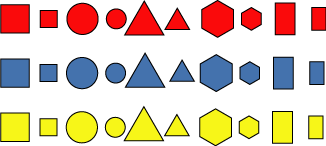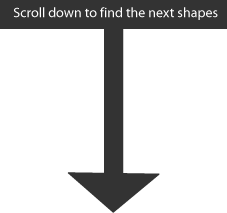Or search by topic
Number and algebra
Geometry and measure
Probability and statistics
Working mathematically
Advanced mathematics
For younger learners
Logic Block Collections



- Problem
- Getting Started
- Student Solutions
- Teachers' Resources
Logic Block Collections
Have you seen a set of Logic Blocks? There are different shapes, different colours and two different sizes.

I have been collecting some Logic Blocks that go together in a set because something about them is the same. It could be something about their shape or their size or their colour.
What do you think is the same about these two? What other Logic Blocks do you think go with them in the set?

Scroll down to find some more shapes in the set.

Here are the rest of the set.

What others could it have been?
Here are two shapes from another set.

What do you think is the same about these two?
What other Logic Blocks do you think go with them in the set?
Scroll down to find some more shapes in the set.

Here are some more of the set.

What others do you think go with them? There are ten of them altogether.
Now you can make your own sets of shapes. If you don't have any blocks of your own, you could print off and cut up the shapes on this sheet.
Why do this problem?
Possible approach
Key questions
Possible extension
Possible support
You may also like
Chain of Changes
Arrange the shapes in a line so that you change either colour or shape in the next piece along. Can you find several ways to start with a blue triangle and end with a red circle?

